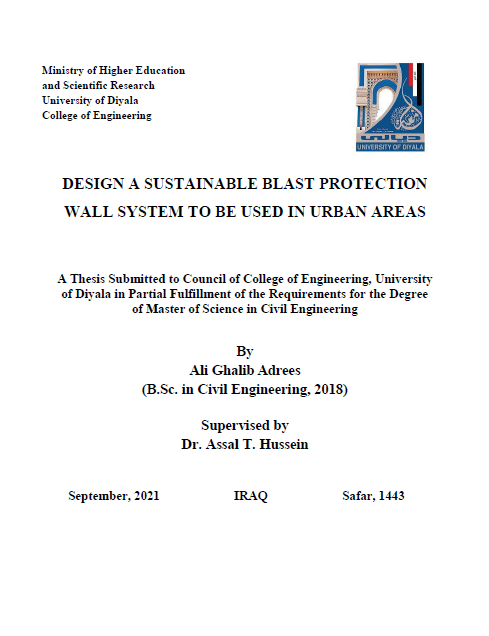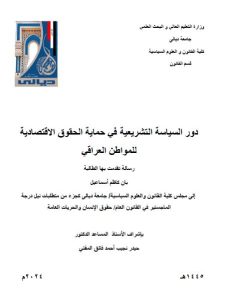ABSTRACT
There have been many attacks in the current century that claimed the lives of many victims and caused economic and psychological effects on societies in a number of regions of the world. In the last years, terrorist organizations have adopted most attacks and used different strategies that made it difficult to identify these attacks by the security and intelligence services. The objective of this study: 1) the extent of the possibility of using eco-friendly available materials to design blast protection wall. 2) verify the ability of the simple blast wall to mitigate explosions. 3) Draw attention to investigate the performance of sustainable materials to mitigate blast.In this study, simple wall system has been proposed a blast wall made of locally available sustainable materials. The structure of blast wall is composed of a parent structure of adobe brick and a core layer of recycled aggregates where the first layer is adobe and the base layer is recycled aggregate and the last layer is adobe brick (Brick-Recycle Aggregate-Brick(BRAB)) and The features of BRAB wall is the low cost of construction and maintenance and can construct with minimum effort. The response of the wall was examined by performing a numerical analysis using the 3D finite element method. The commercial software ABAQUS/Explicit version 6.14 combined with ConWep blast loading model as inbuilt blast load function was considered to represent the interactions between blast wave and the wall. Three groups of simple walls were modeled: the first group consisted of three walls with a height of 3 meters and a thickness of the core area (30,60 and 90) cm. The second group consists of three walls with a height of 4 meters and a thickness of the core area (30,60 and 90) cm. The third group consists of three walls with a height of 5 meters and a thickness of the core area (30,60,90) cm. The TNT explosive charge of 1 kg was placed at different distances from the wall. Through the results of the analysis, it was found that the efficiency of the BRAB walls increases with the increase of the height of the wall, as well as the thickness of the core layer, the group of walls with a height of 5 meters showed a higher efficiency, especially at a thickness of 90 cm for instance, for walls W1 the displacement is reduced by 23.42% when the thickness is increased to 60 cm and it is 35.55% when the thickness of the core is 90 cm. For walls W2 the displacement was reduced by 22.4% when the wall thickness was increased to 60 cm and 36.55% when the thickness of the core was 90 cm. For W3 walls the displacement reduction is 14% when the wall thickness is increased to 60 cm and 52.36% when the thickness of the core is 90 cm.The use of BRAB walls can reduce the construction cost compared to the concrete wall of the same geometry. The cost of construction BRAB wall of thicknesses of 30, 60, and 90 cm, has been reduced by approximately 30%, 20%, and 15%, respectively. Moreover, CO2 emission decreased by more than 98% for the same wall geometry models and the embodied energy has decreased by more than 95%.In conclusion, the present study aims to draw the attention of researchers to consider sustainable blast protection wall systems to reduce injuries and protect property.




